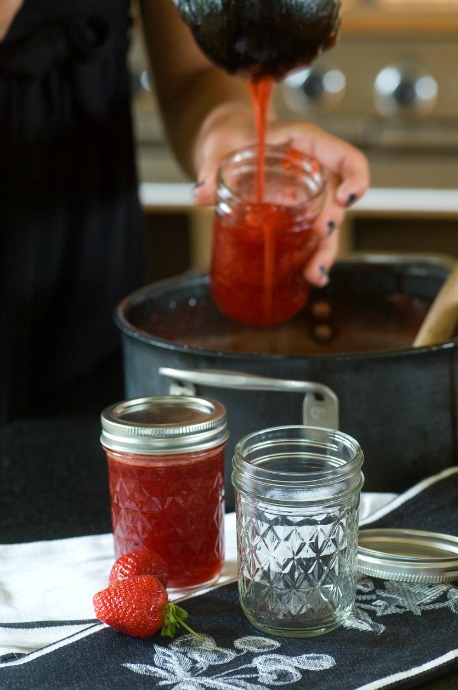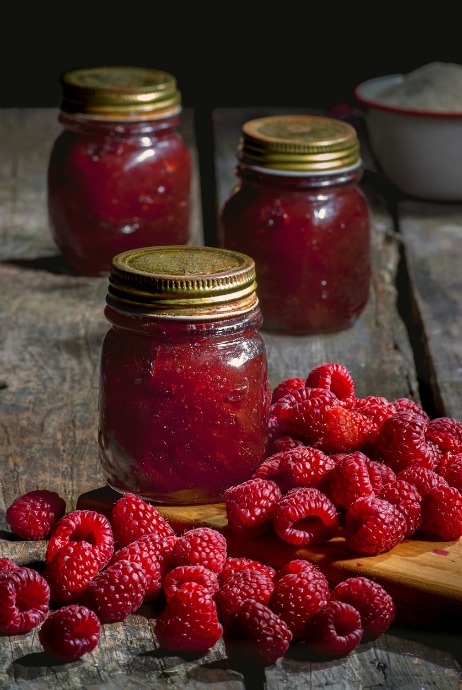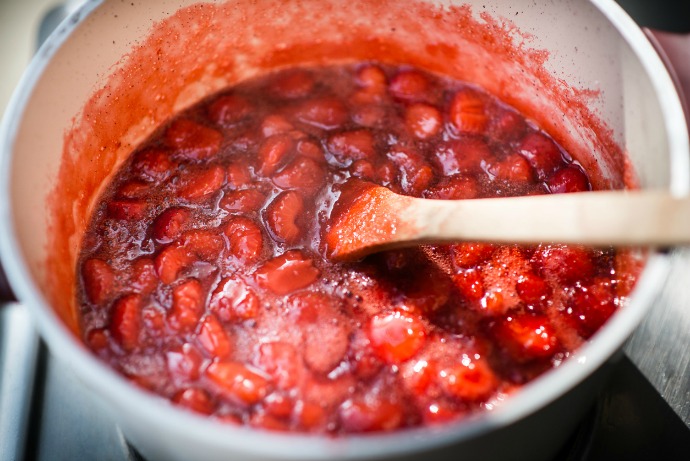Preserve Summer: How to Make Jam
Posted by April on Aug 30th 2017
Whether you like it on toast, biscuits, or straight from the jar, jam is a delicious way to enjoy summer sweetness. Making jam is one of the easiest ways to preserve fruit. Plus, you can do it with basic kitchen tools -- no special equipment required! Keep reading to learn how to make jam.
How to Make Jam: Kitchen Supplies
While you can make jam using basic canning supplies, you can also improvise with your own equipment. You'll need a large stockpot, a smaller saucepan or Dutch oven, a wooden stirring spoon, a ladle, tongs to lift the jars from the hot water, and a way to elevate the jars from the bottom of the pot.
Check out these smart hacks found on The Kitchn. We especially like the idea of wrapping rubber bands around a set of tongs to make them more grippy.

One thing you will need to buy is a package of canning jars and lids. You can find them at your local grocery store, or order them directly from Ball. The correct type of jars have two-part lids with seals. Don't recycle jars from packaged products; they may not hold up to water bath canning, and the lids may not seal properly.
How to Make Jam: Ingredients and Recipes
Of course you will need fruit, but your other ingredients will depend on the recipe you use. As we noted in our post on water bath canning, you should follow tested and approved recipes for safety's sake. Fortunately, there are hundreds of jam recipes available on the Ball Brand website, or in the Ball Book of Canning and Preserving.

Another great resource we found on the Ball Brand website is their Pectin Calculator. The name is somewhat misleading: While it does involve choosing what type of pectin to use (more on that in a bit), it's actually more of a recipe generator. Specify the fruit you want to use, whether you want to make jam or jelly, and what type of pectin you have (or plan to buy), and it generates a recipe that scales up to 10 jars. Brilliant!
How to Make Jam: What Is Pectin, and Why Do You Need It?
Pectin is a starch derived from the peels of fruits and vegetables. While you can make jam without pectin, first time jam makers will have better success with pectin. Your jam won't need to cook as long, and the consistency will be more like what you expect from quality jam. You can buy pectin in jars, or you can make your own.
To make your own pectin, chop two pounds of tart green apples and boil them in four cups of water and one tablespoon of lemon juice. After boiling for half an hour, strain this liquid and cook it down until it's reduced by half. You can freeze this pectin for up to six months. When using this recipe for jam making, you’ll want to add ¼ cup of pectin per cup of fruit.
How to Make Jam: Basic Technique
While we recommend beginners stick to a tested and approved recipe, most jam recipes are similar. Wash and chop your fruit or berries. Cut away any spoiled spots, and only use fruit that is at the peak of freshness and flavor. Mash the fruit, and add it to a large sauce pan along with pectin, sugar, and lemon juice. Cook it over medium-high heat until it boils and begins to thicken.

One smart tip to help you know when your jam is finished: Put a small plate in the refrigerator when you start cooking your jam. When it has thickened, ladle out a bit of jam onto the cold plate. Tip the plate or push the jam with your finger; if it's ready, you'll see it start to gel.
How to Make Jam: Use It or Preserve It
If you plan to eat all of your jam within a couple weeks, you can transfer it directly to jars and put them in the refrigerator. However, if you want to store your jam in the pantry and keep it longer, you will want to seal the jars using the water bath canning method. Refer to the instructions on the Ball Brand website to ensure you process the jam safely. But you should still check the seals by poking the button in the center of each lid. If it flexes, you should place the jam in the fridge and use it up in a week or two.
As an avid farmer, gardener, and cook, April Freeman is an expert in the food production process. She raises pigs, chickens, beef cattle, and grows a wide variety of vegetables and fruits on her family farm in Tennessee. Learn more about April’s firsthand experience with farm-fresh food on her blog, Feeding My Family.
 Free shipping over $49
Free shipping over $49










